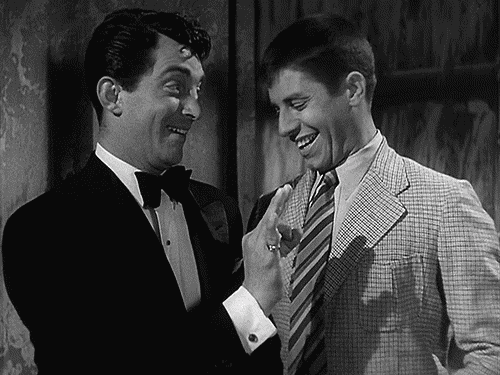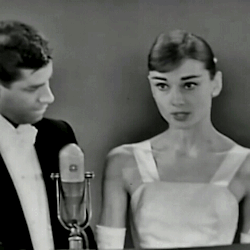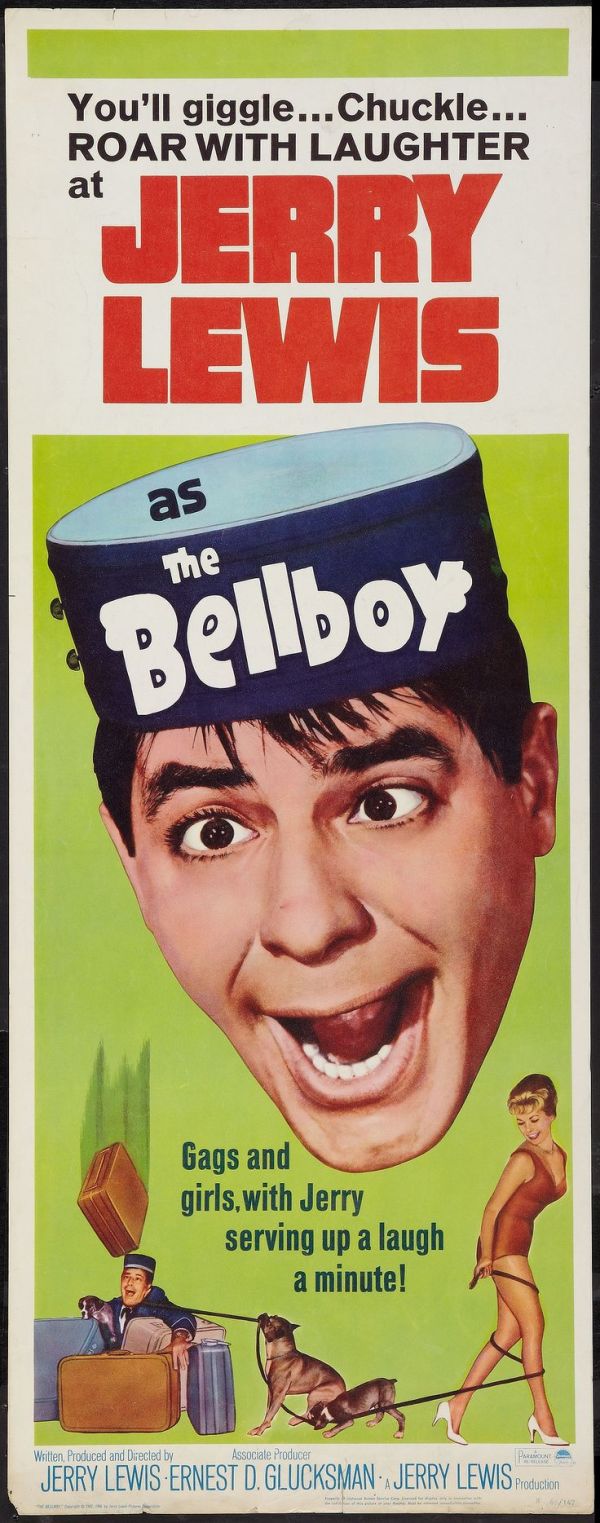NEW YORK MAGAZINE: He grew up in showbiz, much of it Catskills-based, traveling with his mom and dad through the Borscht Belt. His future could be discerned in some of his first, juvenile routines: pantomiming to grand opera and other emotional recordings, his rubber face exaggerating every vocal quaver, enacting a counter narrative that was completely disruptive — yet indebted to the high art of his predecessors. This is a recognizable mode of being for a Jewish comedian, who’ll find a quick route to an audience’s heart as a clown, but secretly wants to be part of the world that he or she burlesques. They all want to play Hamlet, it’s said. Instead, they play the jester, conscious that they’ll one day be dust, like literature’s most famous dead comedian, Yorick.
The chemistry with singer Dean Martin was spontaneous and organic. Martin would attempt to sing, Lewis would disrupt the song in apparent innocence and unleash chaos. Both men came off better in each other’s company.  Indeed, without Martin’s innate motorlessness, his swacked passivity, the interruptions could have seemed abrasive. They were sometimes referred to as “the handsome man and the monkey,” but Lewis would later tell Peter Bogdanovich that most women wanted to sleep with the monkey, the “boy” whom they could mother. He’d have sex with huge numbers of them while Martin read books in the next room. And his promiscuity continued when he began directing, often having a “hump” at 7:45 a.m. in his trailer before shooting commenced. “I was a fucking animal,” he said — both a critique and a boast.
Indeed, without Martin’s innate motorlessness, his swacked passivity, the interruptions could have seemed abrasive. They were sometimes referred to as “the handsome man and the monkey,” but Lewis would later tell Peter Bogdanovich that most women wanted to sleep with the monkey, the “boy” whom they could mother. He’d have sex with huge numbers of them while Martin read books in the next room. And his promiscuity continued when he began directing, often having a “hump” at 7:45 a.m. in his trailer before shooting commenced. “I was a fucking animal,” he said — both a critique and a boast.
The duo was instantly, insanely popular. In their legendary, constantly extended run at the Copacabana, Orson Welles said that people literally peed their pants laughing. To appreciate them fully, watch their Colgate Comedy Hour from the mid-’50s, rather than their hit movies — although many of the latter hold up. Behind the scenes, Lewis spent time learning about cameras and lenses and composition and sound, finding a mentor (and collaborator) in former Warner Bros. cartoon director Frank Tashlin. It was Tashlin who directed the last Martin and Lewis comedy, the 1956 Hollywood or Bust. The duo did not speak off camera during the shoot, Martin having told Lewis that the latter “was just a dollar-sign” to him. Lewis — who professed his love for Martin, even at the pair’s lowest ebb — was thrown out of the nest. But did he fly. MORE
NEW YORK TIMES: [F]inally ready to assume complete control, Mr. Lewis persuaded Paramount to take a chance on “The Bellboy” (1960), a virtually plotless hommage to silent-film comedy that he wrote, directed and starred in, playing a hapless employee of the Fontainebleau Hotel in Miami Beach.
It was the beginning of Mr. Lewis’s most creative period. During the next five years, he directed five more films of remarkable stylistic assurance, including The Ladies Man (1961), with its huge multistory set of a women’s boardinghouse, and, most notably, The Nutty Professor (1963), a variation on Dr. Jekyll and Mr. Hyde, in which Mr. Lewis appeared as a painfully shy chemistry professor and his dark alter ego, a swaggering nightclub singer.
With their themes of fragmented identity and their experimental approach to sound, color and narrative structure, Mr. Lewis’s films began to attract the serious consideration of iconoclastic young critics in France. At a time when American film was still largely dismissed by American critics as purely commercial and devoid of artistic interest, Mr. Lewis’s work was held up as a prime example of a personal filmmaker functioning happily within the studio system.
The Nutty Professor, a study in split personality that is as disturbing as it is hilarious, is probably the most honored and analyzed of Mr. Lewis’s films. (It was also his personal favorite.) For some critics, the opposition between the helpless, infantile Professor Julius Kelp and the coldly manipulative lounge singer Buddy Love represented a spiteful revision of the old Martin-and-Lewis dynamic. But Buddy seems more pertinently a projection of Mr. Lewis’s darkest fears about himself: a version of the distant, unloving father whom Mr. Lewis had never managed to please as a child, and whom he both despised and desperately wanted to be. The Nutty Professor transcends mere pathology by placing that division within the cultural context of the Kennedy-Hefner-Sinatra era. Buddy Love was what the midcentury American male dreamed of  becoming; Julius Kelp was what, deep inside, he suspected he actually was. MORE
becoming; Julius Kelp was what, deep inside, he suspected he actually was. MORE
FRESH AIR: Comedian, actor and director Jerry Lewis died Sunday at his home in Las Vegas. He was 91. Throughout his childhood, Lewis’ parents performed a vaudeville song-and-dance act at resorts in the Catskill Mountains, a circuit known as the Borscht Belt. He dropped out of high school to pursue his own career, and in 1945 he met singer Dean Martin. Together, they formed a nightclub act in which Martin was the sophisticated crooner, while Lewis did slapstick comedy as a bumbling busboy. The act was a hit, and Martin and Lewis graduated to TV and film, making 16 movies before a falling out in 1956. Afterward, Lewis found success as an actor, director and even a singer. His album Jerry Lewis Just Sings hit No. 3 on the Billboard chart, outselling any of Martin’s recordings. Lewis was perhaps best known for his split personality role in the 1963 film The Nutty Professor. He was also closely identified with the Muscular Dystrophy Association, and hosted its Labor Day telethon for many years. Lewis spoke to Fresh Air in 2005. MORE

